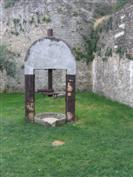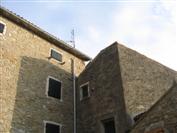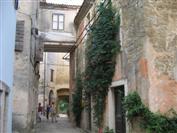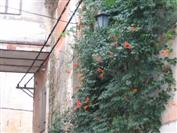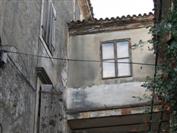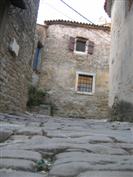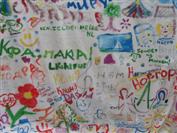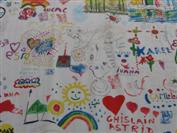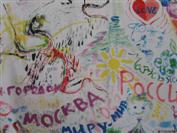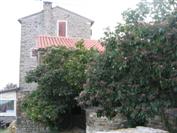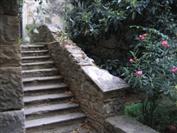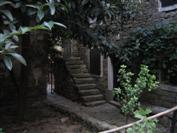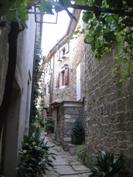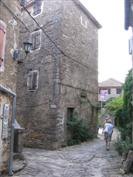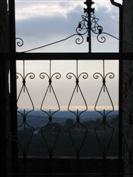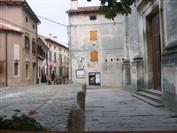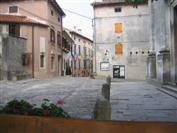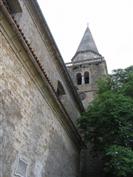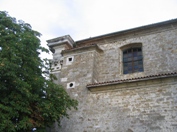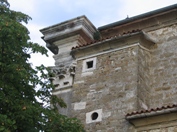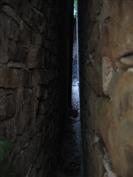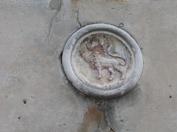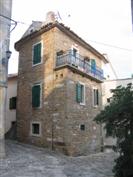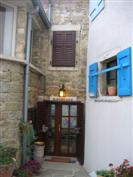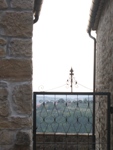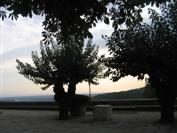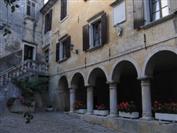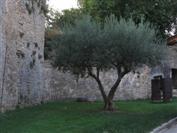Grožnjan-Grisignana
Early history
The first mention of Grožnjan dates from 1102. when istrian Marquess Ulrich II and his wife Adelaida granted their land to Patriarch of Aquileia. In this document the fort is called Castrum Grisiniana. In 1238 Grožnjan was in property of Vicardo I. Pietrapalosa. In 1286 Grožnjan fort was lended to the Aquileian patriarch during war with Venice but changes sided in 1287 and gives Grožnjan to Venice.
Vicard's son Pietro inherited Grožnjan after his father's death in 1329, and when he died in 1339 it again became patriarch's property. The patriarch rented it to Furlanian noble family de Castello. In 1354 Grožnjan's new owner became Volrich, or Ulrich, Reifenberg, who in 1358 sold it to Venice for 4,000 ducats in order to pay his debts. Volrich was a son of Deitalm, a descendant of Aquileian patriarch Volcher, and in 1356, during the war between Venice and Hungary, his army, entrenched in Grožnjan, strongly resisted the Hungarian army. Yet it seems that at the same time Volrich negotiated the surrendering of Grožnjan in Venice.
Venetian Republic
Venice took Grožnjan over in 1358 and ruled until its demise in 1797. In 1359 the Umag captain Pietro Dolfin moved to his new residence in Grožnjan, and in 1360 and 1367 he fortified the town walls and renovated the palace. Captain's Office moved from Grožnjan to Raspo in 1394, when a central rule was established for the whole area. Since then Grožnjan was governed by Venetian noblemen who were given the title of "Mayor". From the early 16th century Grožnjan's mayors were chosen among Koper noblemen. In the 15th century judicial duties were performed by the Pietrapelosas, and in 1446 the town walls were fortified in order to protect it from possible Turkish and attacks. After the terrible plague in 1630 the Grožnjan area became almost completely deserted. In order to revitalize the area the St. Mark's Republic brought Italian families from Veneto and Friuli; these were mostly tradesmen who settled in towns. Settlers were invited by the venetian Republic to cultivate the abandoned land in some hamlets around Grožnjan. Most of the settlers were Morlaks from Dalmatia, but also Slavic people, Albanians and Greeks, all refugees of the ottoman empire.
All settlers in Istria were given free land and were exempt from fiscal duties and work obligations for twenty years; the only condition was to cultivate the land within five years. Economic success of colonization of villages reflected on the towns as well: trade and transportation developed and demographics improved.
Austrian Empire
After the fall of Napoleon's Empire in 1813, his Illyrian provinces, including Grožnjan, became part of the Austrian Empire. In 1816 the Austrian Emperor Francis II visited Grožnjan on his tour through Istria and met with the local clergy and population. During Austrian rule the Grožnjan area flourished. Building of the Parenzaner Bahn railroad in 1902 enhanced development of trade and agriculture. Wine, olive oil, eggs and other produce were sold in Koper and Trieste. According to the 1910 census, the town of Grožnjan had 1,658, and the municipal area 4,028 inhabitants. The town had a doctor, a post office, a school, a lawyer, notary public, oil- processing plant, bakery, groceries and clothing stores, two butcher's, several inns and various trade shops (shoemakers, blacksmiths, tailors, carpenters, etc.).
This article is licensed under the Creative Commons BY-SA License. It uses material from Wikipedia content.
Grožnjan-Grisignana
